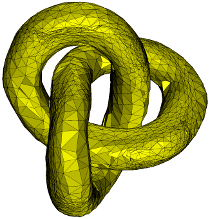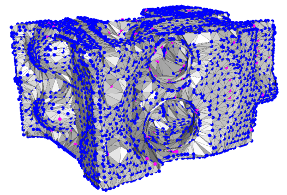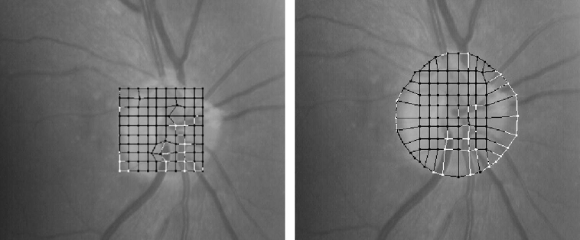Deformable models
We have developed methodologies for both 2D and 3D segmentation and reconstruction based on deformable models. The proposed models integrate features of region based and boundary based segmentation methods in order to fit the contours of the objects and model its inner topology. Also, they implement automatic procedures, the so called topological changes, that alter the mesh structure and allow the segmentation of complex features such as pronounced curvatures or holes, as well as the detection of several objects in the scene. This is one of the main advantages of the proposed models.


The evolution of the deformable model is governed by energy functions defined in such a way that the function reaches a minimum near the features of interest. Hence, the deformation process is based on an energy minimization process. In this sense, we have tested our proposals with well-known optimisation procedures. Moreover, we have analyzed evolutionary techniques, such as genetic algorithms, in order to increase the accuracy of the results.

Main publications
-
,
,
,
,
"Topological Active Volumes: a Topology-Adaptive Deformable Model for Volume Segmentation",
Pattern Recognition,
43 (1),
255-266,
2010.
[Abstract] [PDF] [+Info.]
-
,
,
,
,
"Genetic Approaches for Topological Active Nets Optimization",
Pattern Recognition,
42,
907-917,
2009.
[Abstract] [PDF] [+Info.]
-
,
,
,
"Localisation of the Optic disc by means of GA-Optimised Topological Active Nets",
Image and Vision Computing,
27,
1572-1584,
2009.
[Abstract] [PDF]
-
,
,
"Topological Active Volumes",
Advances in Intelligent Vision Systems: Methods and Applications; EURASIP Journal on Applied Signal Processing,
13(1),
1939-1947,
2005.
[Abstract] [PDF] [+Info.]